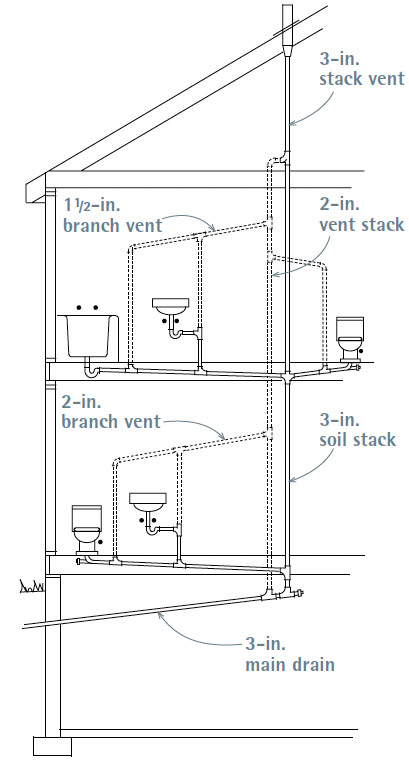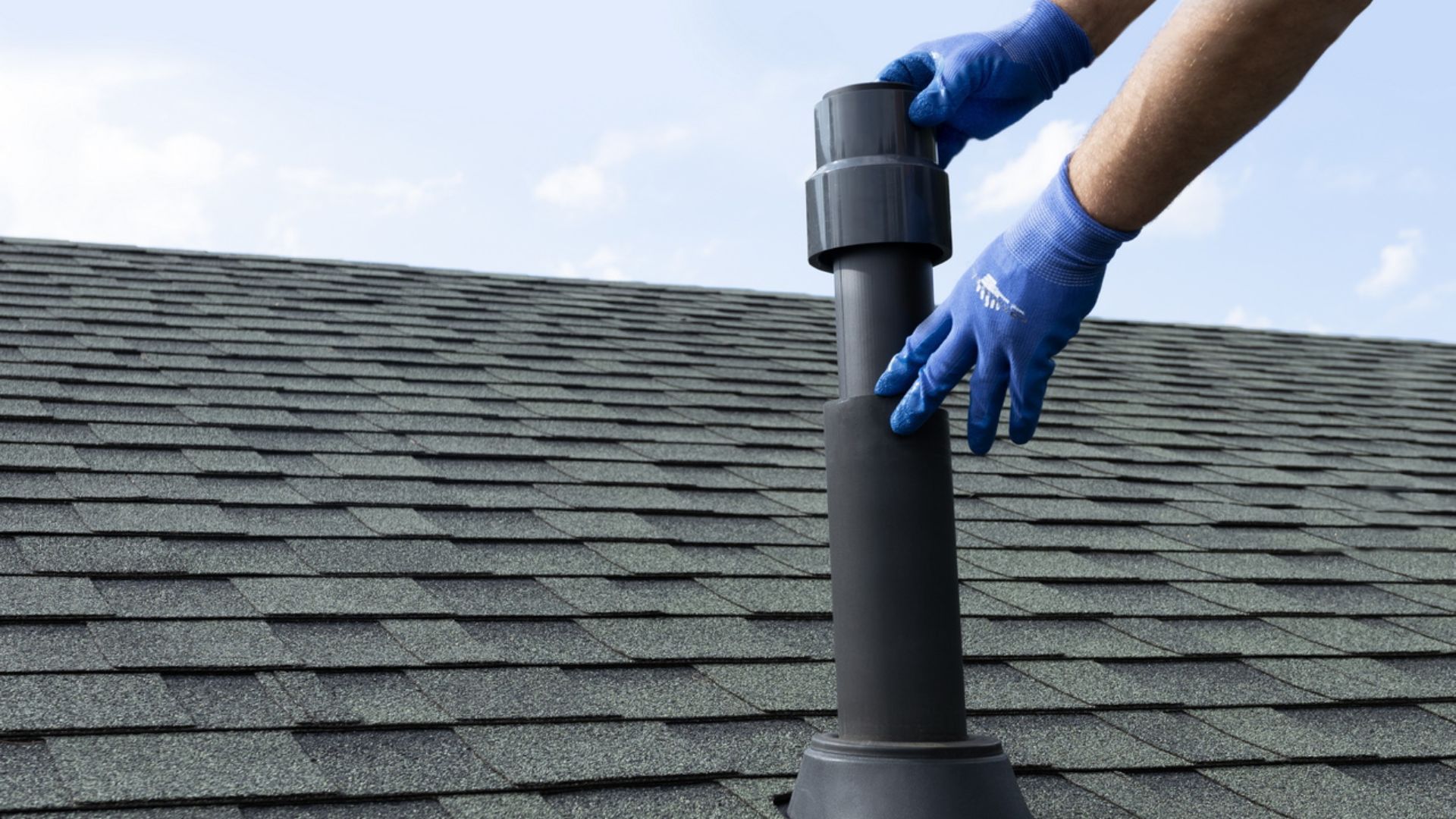Why Adequate Ventilation Matters in Plumbing Systems
Why Adequate Ventilation Matters in Plumbing Systems
Blog Article
The author is making several great annotation related to The Upsides of Proper Ventilation in Plumbing Design as a whole in the content beneath.

Appropriate air flow in plumbing systems is commonly overlooked, yet it is essential for keeping the functionality and safety of your home's plumbing. Air flow assists control atmospheric pressure, avoid the build-up of dangerous gases, and guarantee the efficient elimination of waste. In this overview, we will discover the importance of appropriate pipes air flow, just how it functions, and the advantages it brings to your pipes system.
Comprehending Ventilation in Plumbing
Ventilation in plumbing describes the network of pipes that enable air to stream with the water drainage system. These vents serve multiple objectives, including controling atmospheric pressure within the pipelines, stopping drain gases from entering the home, and helping in the smooth flow of wastewater.
Exactly How Air Flow Works in Pipes Solutions
Air Pressure Policy
Proper air flow preserves balanced air pressure within the pipes system. When water flows with pipelines, it displaces air. Without sufficient air flow, this displacement can develop negative pressure, leading to slow drains or siphoning of water from catches, which can cause undesirable smells to seep right into the home.
Protecting Against Drain Gas Build-up
Among the most crucial features of plumbing vents is to prevent drain gases, such as methane and hydrogen sulfide, from gathering within the home. These gases can pose serious wellness dangers and are extremely combustible. Vent pipelines permit these gases to leave safely outside.
Helping in Waste Elimination
Ventilation aids in the effective removal of wastewater by stopping airlocks in the water drainage system. When air can stream freely via the vents, it enables water and waste to move efficiently through the pipelines, decreasing the threat of obstructions and backups.
Sorts Of Plumbing Vents
Key Stack Vent
The main pile air vent, likewise referred to as the air vent pile, is the key air vent in a pipes system. It extends from the major drainpipe align via the roofing, allowing gases to get away and fresh air to get in the system.
Branch Vent
Branch vents link to the main pile vent and offer specific fixtures, such as sinks, commodes, and showers. These vents guarantee that each component has appropriate ventilation to work effectively.
Air Admission Shutoff (AAV).
An Air Admission Shutoff (AAV) is a one-way shutoff that enables air to enter the pipes system without the requirement for a conventional air vent pipe extending via the roofing system. AAVs are commonly made use of in restorations or areas where mounting a conventional air vent is not practical.
Indications of Poor Air Flow in Pipes.
Slow Draining Fixtures.
If your sinks, tubs, or bathrooms are draining pipes gradually, it could be an indication of poor air flow. Insufficient air circulation can create a vacuum cleaner effect, making it tough for water to drain pipes properly.
Gurgling Seems.
Gurgling sounds originating from drains are often a result of air being sucked through water catches because of unfavorable pressure in the pipelines. This is a clear indicator of not enough ventilation.
Unpleasant Smells.
Sewer smells inside your home are a warning that your plumbing system is not effectively aerated. This can imply that sewage system gases are not being effectively aired vent outside, causing possibly unsafe conditions.
Typical Air Flow Blunders.
Poor Vent Sizing.
Making use of undersized air vent pipes can bring about poor air circulation and pressure imbalances in the system. It's important to make use of vents that meet the specific requirements of your plumbing system.
Improper Vent Placement.
Putting vents too far from the components they offer can reduce their effectiveness. Correct positioning makes sure that air can flow freely and successfully with the system.
Ignoring Code Needs.
Building ordinance supply details guidelines for plumbing air flow. Disregarding these codes can lead to a system that stops working to operate correctly and may cause costly fixings or health hazards.
Advantages of Proper Ventilation.
Improved System Efficiency.
Effectively aerated plumbing systems operate extra efficiently, with fewer blockages, faster draining pipes, and much less pressure on the pipelines. This efficiency extends the lifespan of the plumbing system.
Improved Air Quality.
By avoiding drain gases from entering your home, appropriate ventilation contributes to much better indoor air high quality, making your living environment healthier and more comfy.
Protecting Against Water Damages.
Sufficient ventilation aids prevent water from being siphoned out of catches, which can cause drain gases entering the home and triggering water damage over time.
Steps to Make Sure Proper Air Flow.
Consulting Plumbing Codes.
Always consult local plumbing codes when designing or changing your plumbing system. These codes provide the needed guidelines for appropriate airing vent and ensure your system satisfies security criteria.
Regular Examination and Upkeep.
Regular assessments can assist determine possible air flow concerns before they become significant troubles. Upkeep jobs, such as cleaning air vent pipelines and checking for obstructions, are necessary for maintaining the system in good working order.
Expert Setup.
For new installments or major adjustments, it's wise to employ a specialist plumbing professional. They have the experience to guarantee the air flow system is correctly made and installed according to code.
Conclusion.
Correct air flow is a critical part of any pipes system, guaranteeing that it operates efficiently and safely. By recognizing the importance of ventilation, identifying the signs of inadequate ventilation, and taking steps to preserve your system, you can stop pricey issues and secure your home's air top quality.
Understanding the Role of Your Plumbing Vents in the Drainage System
The plumbing system in your home is more than just the kitchen sink, toilet, and bathroom. Some problems that arise within home plumbing are hard to detect because homeowners may not understand potential causes.
One part of the plumbing system that could cause you endless problems is the venting. The drain lines that run through your home and drain wastewater need proper venting to function properly. Faulty plumbing vents can lead to several problems that require the expertise of a plumber to check them out. Before finding experienced plumbing services, there are a few things to learn about plumbing vents.
Why vents are vital
Vents in the plumbing system lead to an outside area such as the roof or the back. The function of these vents is to keep sewer gases away from the drain pipes. They also establish seals in the drainage pipes that prevent the sucking back of waste gases into the home. Venting in the plumbing system also allows oxygen to get into the drainage system, which is an essential component in the breakdown of waste matter. The vents also ensure that the air pressure within the drainage system remains balanced, facilitating the flow of wastewater.
Possible problems
When the plumbing vents are problematic, one of the consequences is imbalanced water levels in the toilet. If you notice that the levels in the toilet bowl rise and fall all the time, then there may be something wrong with the vents.
Another issue is air bubble formation within the toilet. In most cases like these, the drain pipes are not receiving enough air. Lack of air pressure equalization is what leads to water flow problems. If you come across such issues in your home, make sure you call professional plumbers, such as the ones from Perfection Plumbing & Drain Cleaning Ltd.
Potential causes
Several scenarios can lead to some of the plumbing problems that homeowners suffer because of venting. One such scenario is the use of incorrectly sized vents. Usually, vents are the same size as the drain line to facilitate proper venting. Vents that are too small will lead to some plumbing issues. Another potential cause is fixtures that are not close enough to the vents. In this scenario, air forces itself through the traps of other fixtures, leading to gurgling sounds from toilets and sinks.
Most of these problems also happen with clogged vents. Tree leaves and debris can cause clogging when they make their way down a vent. Unclogging plumbing vents is a service that you can entrust to Saskatoon plumbers. They will know how to snake down vents and remove clogging stuck in fixtures.

Hopefully you enjoyed our section on What Is A Plumbing Vent & How Do They Work?. Thanks so much for taking a few minutes to browse our content. Sharing is good. You won't know, you could be doing someone a favor. I value your readership.
Get Your Estimate Now Report this page